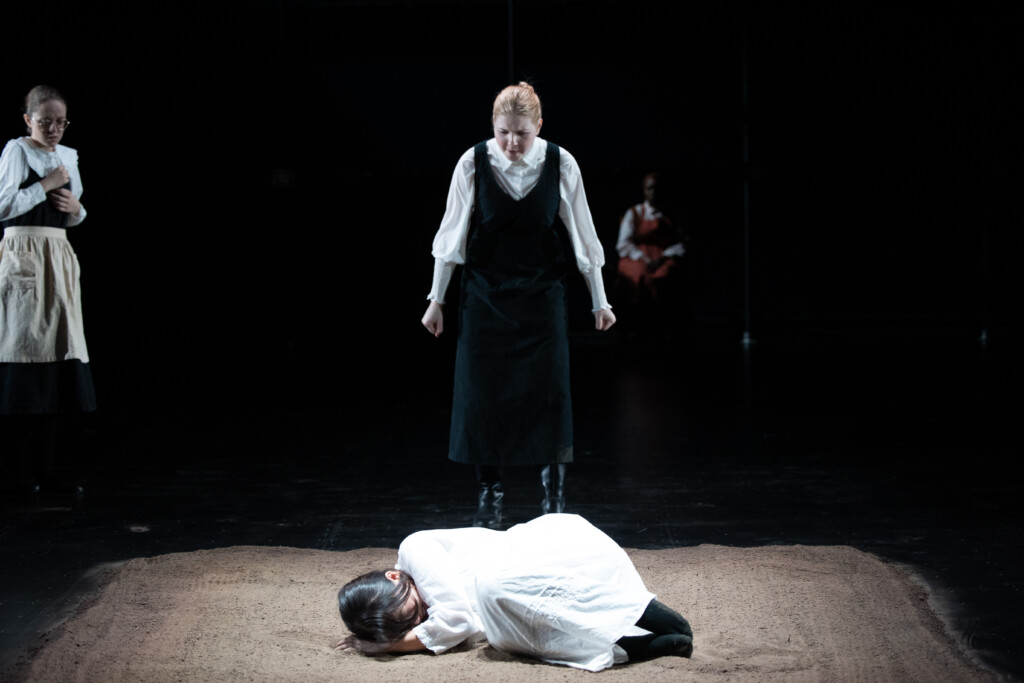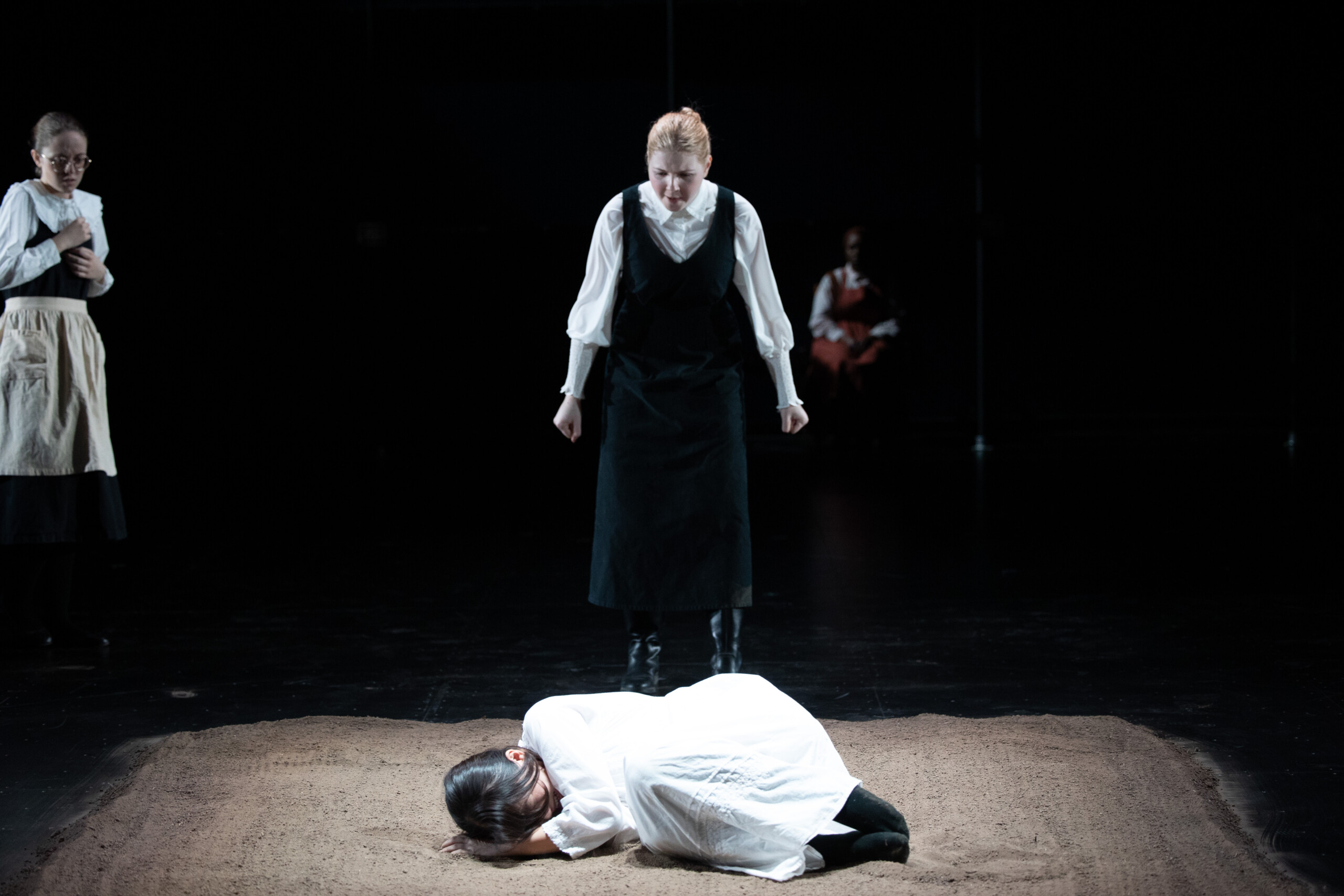It starts with a choir.
There are few things as euphoric and eerie to me as choral music — as a big choir nerd-turned-a cappella dork, some of my most shiver-inducing memories come from singing big block chords alongside dozens of others. The feeling of being unified, of singing as one, and pushing forth certain notes in a chord to make them ring, in discord or in consonance, quite literally strikes a chord within one’s self.
I read “The Crucible” in my junior year of high school and wasn’t completely taken with it. Maybe it was the fact that I “played” the wife of my English teacher and had to accuse him of adultery in front of my class; maybe it was a lack of connection to Arthur Miller’s dialogue as read by disinterested high school students. However, Todd Theatre’s rendition had me gripped.
From the second the first note rings out, the raising of voices immediately raises the stakes and investment from the audience. Music has this innate propensity to bring communities together, and in “The Crucible,” it serves as the only point of unity amongst the residents of Salem before the town is ripped apart by deceit, hysteria, and religious fervor. Cue three hours of some of Todd’s finest drama.
I often find that Todd’s sets are gorgeous, and a lot of them feel lived-in enough to draw a viewer in — in particular, I had a penchant for the strewn-about files that littered the set of “Fellowship” — but this set design by English professor Nigel Maister shocked me in its efficiency in conveying the tension and bleak outlook of “The Crucible.” The set is sparse and focuses on pulpit seating in various states of disarray, and the metal bars that hold up the scene lighting add to the vibe. It’s my favorite set to date.
On the performance side of things, Todd’s productions tend to yell a lot, and “The Crucible” makes the yelling most compelling out of any of their shows that I’ve seen. For such a long show, I expected that I would get tired of how high the emotions were throughout the show, but the cast does a great job of what I would mainly call “yelling in different ways.” This comes across most in scenes with the young girls at the epicenter of the witchery accusations, and each of the five handle portraying their communal and personal hysteria incredibly well.
In addition, the acting in this show is oftentimes physical, and the actions that are taken by each character feel motivated and have stakes — props to fight director J. David Brimmer for that. Whether it’s someone being held back by a friend or foe, or being thrown to the ground, or flinging objects across the room, the actors do a great job of preemptively setting their characters up to make these reactions feel valid within the scene rather than there for the sake of drama itself.
I could go on about the actors — the students and community guests alike are both fantastic, but to shout everyone out for their contributions and dedications to their characters would feel redundant, and to point out anyone in particular would feel like a farce since everyone stood out for their own reasons — but moreso, the group as a whole plays off each other very well and makes the town feel alive. There is blood, there is dirt and grime, and behind the scenes, there is blood, sweat and tears poured into this production that you can feel palpably on stage.



